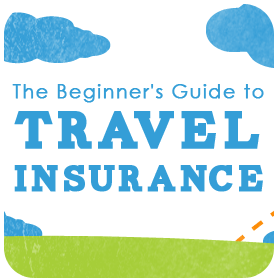 Loopholes and ‘small print’ drive people crazy.
Loopholes and ‘small print’ drive people crazy.
An insurance policy is a legal contract. The coverage, exclusions, and ‘small print’ of the insurance plan are available to read in something called the policy, certificate, or description of coverage.
Many travelers buy insurance and assume ‘everything’ is covered, but as with all insurance plans that’s not the case.
Travelers get frustrated if a claim is delayed or denied, and assume that they have been cheated because of a ‘loophole’.
These frustrations could be avoided by understanding the policy, knowing what is covered, and what is not covered.
Here are the most common ‘loopholes’, and how to avoid them:
1. Not a Covered Reason for Cancellation
No insurance plan can cover ‘everything’.
When we discussed travel insurance coverage earlier, we mentioned a list of covered reasons for trip cancellation.
This list includes reasons like someone getting sick, a hurricane, being laid off, a terrorist incident, and more.
Companies list the covered reasons in the plan’s policy, certificate, or description of coverage. If it is not on the list, it will not be covered. If insurance companies covered ‘everything’, some people would take advantage by buying insurance for a trip they already know they need to cancel, and then make up a reason.
Want to be covered no matter what the reason?
Get the optional “Cancel for any reason†rider available with many plans, which costs more money but will let you cancel a trip for any reason including simply not wanting to go. Some plans include this coverage if the plan is purchased within a certain time frame.
The bottom line: Read and understand the list of covered reasons in the policy, and if in doubt select the optional “Cancel for any reason†rider or a plan that includes that coverage.
2. Pre-Existing Conditions
This one is complicated, but there is a simple solution.
A pre-existing condition is something that happened (or started to happen) before you were insured. Insurance is meant to cover sudden and unexpected events, which excludes any event that has already taken place.
Insurance companies need to exclude pre-existing conditions from coverage; otherwise you could buy insurance coverage after you know you cannot travel. That would be like a casino taking a bet after the cards are turned over.
Companies do provide a way to get coverage for pre-existing conditions.
The solution?
A waiver to the pre-existing condition exclusion can be included with many plans.
The conditions are typically 1) you need to buy insurance soon after your first trip payment, 2) you need to be healthy when you buy insurance, and 3) you need to insure the full amount of your trip.
The bottom line: Only buy a plan that offers a waiver to the pre-existing condition exclusion, and make sure you meet the requirements for it to apply.
3. Coverage Exclusions
Every insurance plan has exclusions.
The plan’s policy, certificate, or description of coverage has a section entitled General Policy Exclusions (or something similar).
This section gives you a list of the situation in which they will not cover you, and they are very specific.
For example: You will not be covered for loss caused by ‘self-inflicted injury’, ‘driving in a motor competition’, ‘’bungee cord jumping’, ‘any criminal acts committed by you’…you get the idea.
Some exclusions are more common than others, for instance, pregnancy-related issues or loss resulting from intoxication.
The bottom line: Read and understand the list of exclusions in the policy, certificate, or description of coverage.
4. Incomplete Documentation
When a claim is filed, there is paperwork that needs to be submitted.
If a claim is delayed it is often because the company does not have the required paperwork from the insured, or from a doctor, a hospital, etc. The faster they get the required paperwork, the faster your claim can be reviewed.
Also, it’s vital to remember that cancellations must be recommended by a doctor in writing. Coverage for cancellation does not include a parent thinking their child’s cold will make the trip unpleasant for them.
The injury or sickness needs to result in a doctor recommending the trip be canceled. The policy certificate outlines the various documents that will be needed for coverage.
The bottom line: Contact the insurance company as soon as you have any issue, and start saving all receipts and documentation
5. Enrolling Too Late
If you are already sick, it’s too late to buy insurance.
If the hurricane is already named, it’s too late as well.
Insurance cannot be purchased after something has happened. Otherwise it couldn’t work for the company. Again, it’s like a casino taking a bet after the cards are turned over.
Also, certain coverage depends on you enrolling sooner rather than later.
Not only will you will have the longest period of coverage for cancellations, but you could also be eligible for benefits like a waiver for pre-existing conditions, ‘cancel for any reason’ coverage, hurricane coverage, and more.
The bottom line: Get your travel insurance as soon as you make a trip payment
Avoid “loopholes†by reading your policy and buying early
The majority of negative reviews on this site stem from the above 5 topics. Understanding them means understanding your coverage, and it will save you frustration down the road.
Next in the series:
We will look at the Top 10 Questions Every Traveler Asks, where the most frequently asked travel insurance questions are answered is plain language.
Go back to the Travel Insurance 101 series
